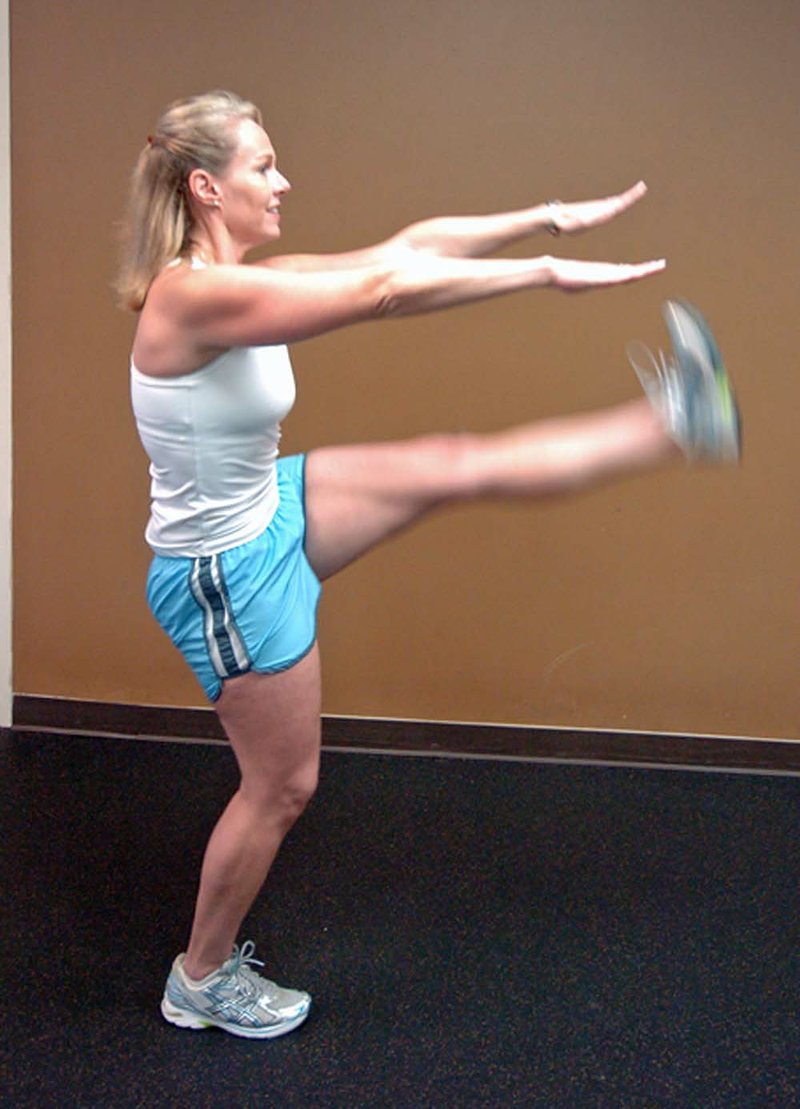LITTLE ROCK — Stretching was first introduced to many of us through our physical education instructors in elementary school or junior high. Back then all we were taught was that you must hold a stretching position for a long time.
Such static stretches are good for improving flexibility, but if that’s all you ever do, you’re missing other more advanced stretching alternatives that can make maintaining your mobility a less tedious chore.
This week, I’ll discuss less mainstream stretching methods and introduce an exercise demonstrating one of them.
Flexibility training receives little attention until you really need it. People rehabilitating rotator cuff problems or chronic low back pain certainly understand the benefits of a solid stretching program, but the rest of our bodies could avoid following them into injury if we followed their rehabilitation programs before we needed rehabilitating.
It shouldn’t take a musculoskeletal breakdown to motivate people to stretch, but that seems to be the rule rather than the exception.
One alternative to the drudge of a boring isometric stretching program that requires holding a muscle in the stretched position for long periods is Post-Isometric Relaxation (PIR). This form of stretching is most easily performed with a partner.
The technique requires that you move a muscle to a stretched position with your partner holding the muscle in place. Once you reach this position, you activate the muscle with a very light contraction for 7 to 10 seconds. After a deep inhalation and exhalation, you release the muscle tension, and the partner increases the stretch by moving the muscle farther into the stretched position. After going through this process twice, the muscle is far more flexible than it would be if only traditional isometric stretching is utilized.
Dynamic stretching is another great technique that allows stretching of the muscle while you move it through the range of motion. These moves are regularly used by athletes during their pregame warmups, but there’s no good reason that regular fitness enthusiasts can’t do them too.
The key is to move very slowly through the range of motion without wild momentum changes.
This week’s exercise is a perfect example of dynamic stretching in a controlled, useful manner.
The Frankenstein Walk can be performed by people of all fitness levels and it requires absolutely no equipment.
1.
Find a space where you have about 15 feet of clear walking path.
2.
Stretch your arms out in front of your body (like Frankenstein’s monster).
3.
Keeping both legs straight and rigid, bring your right leg up toward your right hand. Place it back on the floor.
4.
Lift your left foot up toward your left hand. Remember to keep your legs as straight as possible.
5.
Start walking as you alternate leg kicks to help facilitate hamstring flexibility.
6.
Walk and kick 15 feet and then return to the starting position for one lap. Do two laps.
The Frankenstein Walk is a different way to stretch the hamstrings. Remember that you aren’t using momentum to force your muscles to stretch farther than they comfortably can. Stay within your comfortable range of motion, noticing how that extends as your muscles become warmer from the effort.
It may be beneficial to do some light isometric stretching of these muscles before attempting this movement, particularly if you have very tight hamstrings.
Matt Parrott has a doctorate in education (sport studies), a master’s in kinesiology and is certified by the American College of Sports Medicine.
ActiveStyle, Pages 25 on 02/28/2011
